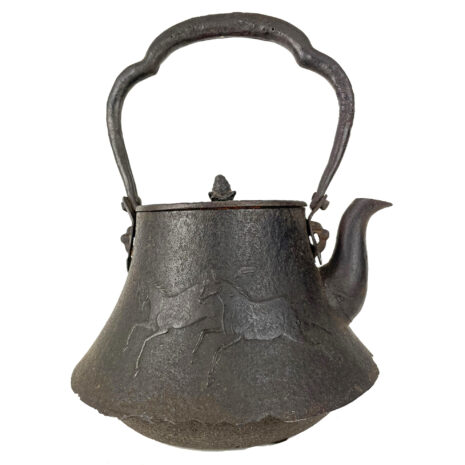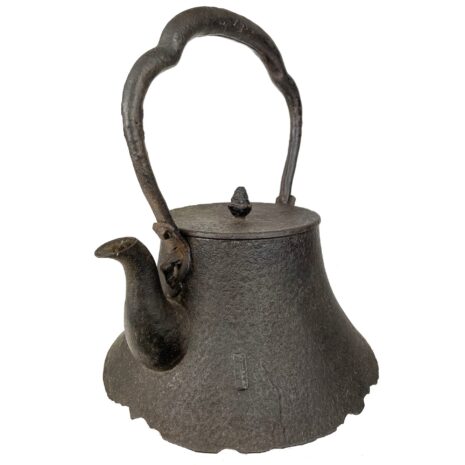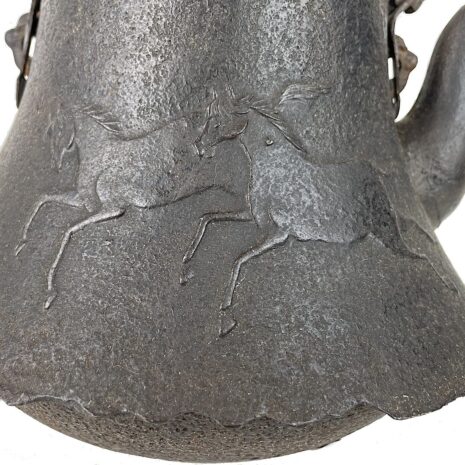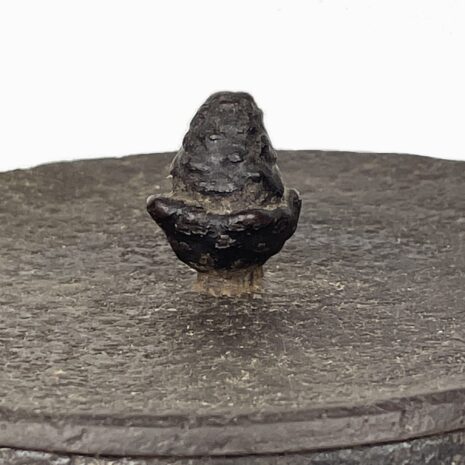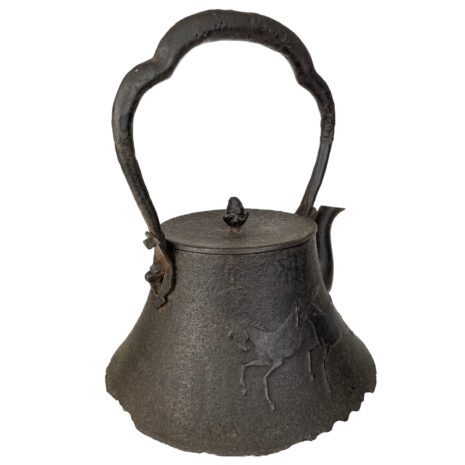Antique Cast Iron Tea Kettle (Tetsubin) Galloping Horses, Japan #4153
Original price was: $695.00.$550.00Current price is: $550.00.
Ht: 12.5″ W: 10″ D: 9.5″ | CALL 213-568-3030 OR EMAIL [email protected] FOR SHIPPING COST
Made in the Meiji era (1868-1912),this hand crafted antique Japanese cast iron tetsubin teapot has an unusual decorative handle and curved spout and has a beautiful relief design of galloping horses. Horses have been revered creatures in Japanese culture that embody grace, power and nobility. The knob on the lid probably represents a lotus, the Buddhist symbol of purity and enlightenment. As with all antiques, these pieces are purely decorative for display purposes only.
Description
Cast iron hand-crafted kettles called “Tetsubin” in Japanese (literally iron pot”), have been produced for hundreds of years developed for use in the Japanese Tea Ceremony (chanoyu), loved teaware sought by tea aficionados. The iron content of these Japanese antiques altars the taste of boiled water, makes it richer, sweeter and has positive effects on the taste of the water used to brew tea making it more mellow. The water’s iron content provides additional health benefits and its iron structure keeps the water hot for a longer period of time. Made in the Meiji era (1868-1912), the beautiful relief design of galloping horses with manes behind them expressing speed is a loved motif, as horses have held a position of importance in Japanese culture as revered creatures that embody grace, power and nobility. The ornamental knob on the lid probably represents a lotus, the Buddhist symbol of purity and enlightenment. Tetsubin are especially popular with collectors considered status symbols, not simply beautifully designed utilitarian and functional kitchen accessories. Like all old cast iron metalwork kettles it has developed completely normal rust on the bottom from disuse and can be removed by boiling green tea inside the pot. Historically, especially during the 19th century, Tetsubin teaware from Japan was considered as status symbol and beautifully designed kitchen accessories. As with all antiques, these pieces are purely decorative for display purposes only.
Additional information
| Place of Origin | Japan |
|---|---|
| Period | Antique, Meiji/Taisho Period |
| Date | 19th Century |
| Materials and Technique | Metal |
| Dimensions (inches) | Ht: 12.5" W: 10" D: 9.5" |
| Dimensions (metric) | Ht: 31.75cm W: 25.4cm D: 24.13cm |
| Weight | 8lb 4oz |
| Weight Metric | 226.796gm |
| Condition | Excellent, See Descripton |
| Item Number | 4153BKE |
| Shipping Box Size | Oversized. Call 213-568-3030 or email [email protected] for shipping. |

